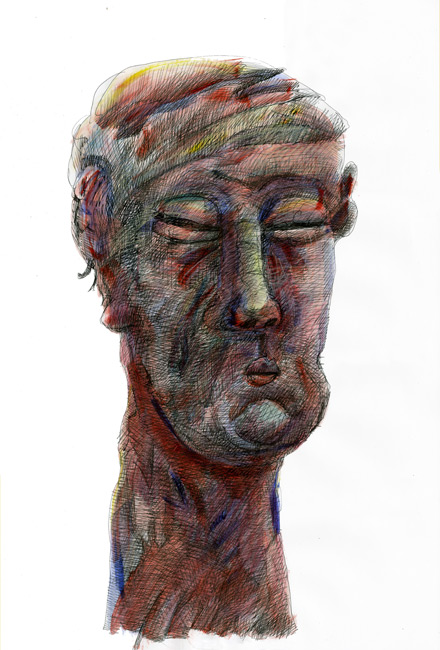This paper is one of the prominent research in applying MRF to computer vision problems in the early days. The author demonstrates that 3 problems (super-resolution, intrinstic image and motion estimation) can be solved efficiently through proper modelling with MRF. Although the author titled this approach as a "learning" process, the computational problem we actually solve is combinatorial optimization over a huge number of states. Such scale of search space was previously explored only possible with generic local search algorithms such as simulated annealing, GA, etc., which often returns weak local optima.
A Markov random field consist of two components: nodes and edges. Each node wanders among a pre-determined set of possible states, which each corresponds to a local decision with actual meaning. An energy function is then designed to encourage the nodes' decisions to suit our purpose, based on the individual decision of each node and the decisions of the two ends of each edge. That is the concept of MRF optimization.
Formulating problems under the MRF framework involves to find the data term and the smoothness term energy functions. The data term, sometimes called the evidence term, measures how a decision of one node is locally supported by statistics of the problem instance. The smoothness term, on the other hand, measures how one node's decision is compatible with the other one's on the common edge. The definition of both functions is nevertheless set free to the designer. For example, in this paper the author choose example patches from a large dataset for the possble states of MRF nodes. This formulation effectively quantize the huge decision space to a few most "nature" ones. The resulting MRF problem is then solved with belief propagation.
Strictly speaking, the answer we found through belief propagation is still local optima, just with theoretical guarantees of higher quality. The visual quality of answer, however, turns out to meet most people's need in many cases. BP is certainly not the only way we can solve MRF problems. In the recent years, a lot of new solvers were proposed, including graph cut and tree-reweighted message passing. They all provide solutions with even higher quality in more efficient ways. The remaining problem would be to find a really suitable energy for your problem, which is, after all, the fundamental diffculty in the algorithm design.


沒有留言:
張貼留言